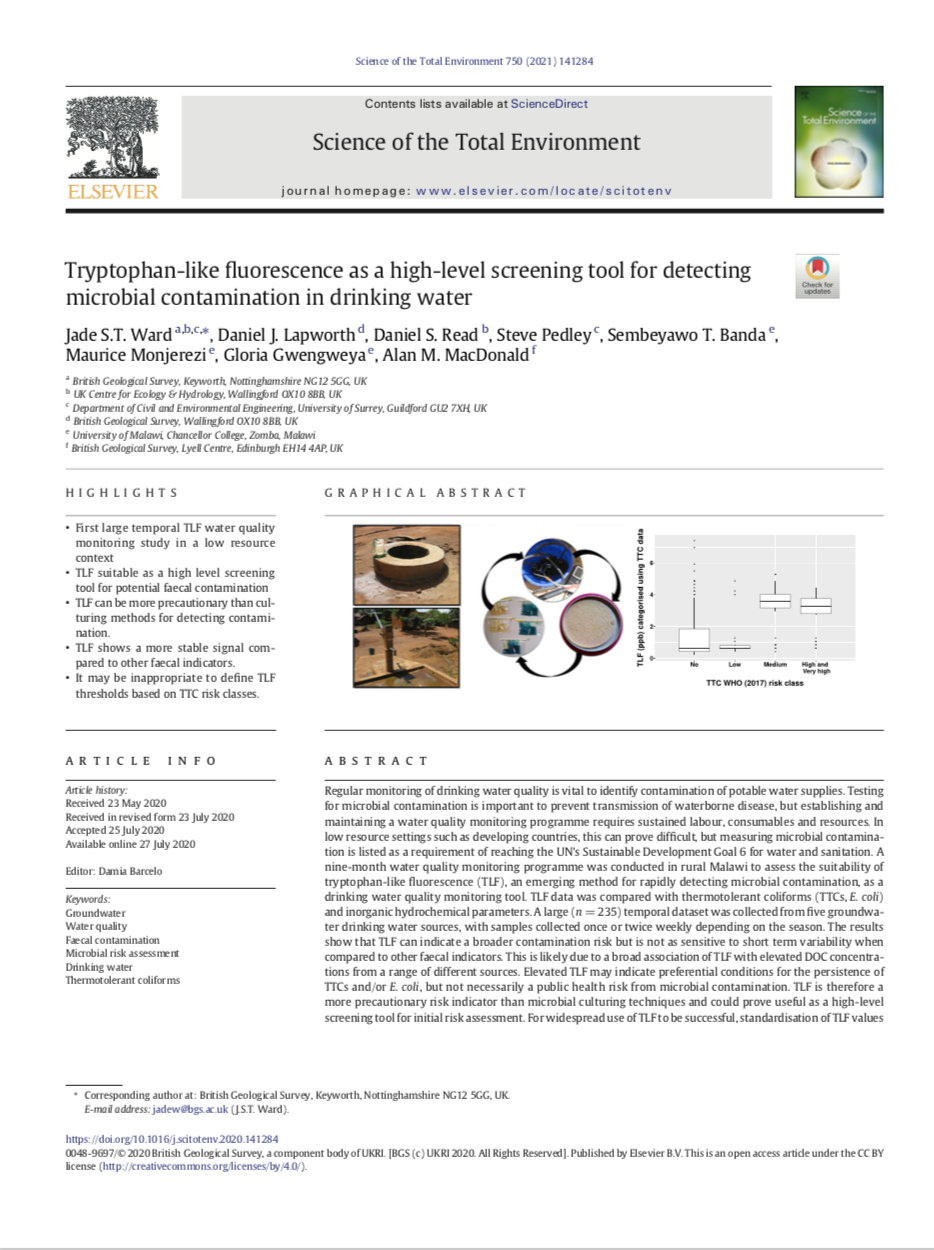Authors: Jade S.T. Ward, Daniel J. Lapworth, Daniel S. Read, Steve Pedley, Sembeyawo T. Banda, Maurice Monjerezi, Gloria Gwengweya, Alan M. MacDonald
Regular monitoring of drinking water quality is vital to identify contamination of potable water supplies. Testing for microbial contamination is important to prevent transmission of waterborne disease, but establishing and maintaining a water quality monitoring programme requires sustained labour, consumables and resources. In low resource settings such as developing countries, this can prove difficult, but measuring microbial contamina- tion is listed as a requirement of reaching the UN’s Sustainable Development Goal 6 for water and sanitation.
A nine-month water quality monitoring programme was conducted in rural Malawi to assess the suitability of tryptophan-like fluorescence (TLF), an emerging method for rapidly detecting microbial contamination, as a drinking water quality monitoring tool.

